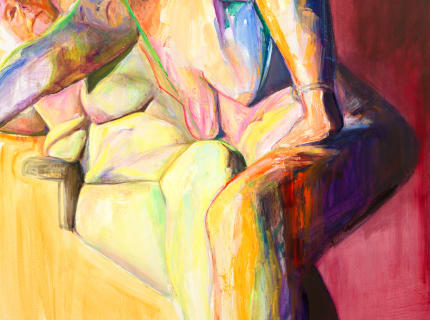THE VIBE started to trickle out via Instagram. For a few days, my feed was inundated with pictures of all the cool new shit on view at the Museum of Modern Art, New York. You could smell victory in the air: The artists were happy. Then the New York Times weighed in and touched the wide shoulders of the new, bigger-is-better MoMA with their magic wand. Could it be? Had MoMA, the perennial whipping boy of art historians, radical artists, and cranky art critics, gotten it right? And by right, at this moment, we mean that the collection has been installed with an eye toward inclusivity—of medium, of gender, of nationality, of ethnicity—and that modernism is no longer portrayed as a single, triumphant narrative, but rather as a network of contemporaneous and uneven developments. Right means that the curatorial efforts to dig deep into MoMA’s astounding holdings looked past the iconic and familiar (read: largely white and male). Right means that the culture wars, somehow, paid off. Right means that MoMA has finally absorbed the critiques of the past three decades—from the critical tear-down of former chief curator of painting and sculpture Kirk Varnedoe’s 1990 show “High and Low: Modern Art and Popular Culture” to the revisionist aspirations of former chief curator of drawings Connie Butler’s “Modern Women” project (2005–). With these possibilities hanging in the air, to be overtly critical or hostile toward the once-reliable bad object of MoMA suddenly felt just shy of churlish.
As for MoMA, better late than never. There’s no arguing with the stuff the curators have recently acquired or pulled out of storage. I mean, come on: The contemporary galleries open with a Louise Lawler! And what about the double Frida Kahlo portrait with the mirror? The quietly staggering Anne Truitt? The early Eva Hesse painting of a schematic face? An entire gallery dedicated to weaving? Amy Sillman’s collection mash-up, dedicated to the problem of shape (rather than to those old sawhorses line and color)? The Édouard Vuillard painting of the woman emerging from the wall? The James Ensor frieze of ghouls rendered in the colors of seashells? The Baroness Elsa von Freytag-Loringhoven’s Dada Portrait of Berenice Abbott? As they say in New York, “What’s not to like?”
And while I’m in praise mode, allow me to call out the extraordinary curatorial feat in the second-floor contemporary galleries, where we find a spectacular Senga Nengudi corner piece in the same room as a subtle Maren Hassinger sculpture. “Just Above Midtown,” indeed. The pairing feels like the old days of Picasso and Braque. But this juxtaposition is not all about righting the wrongs of history with intimacy and sisterhood. The room is arranged such that, beyond Hassinger’s field of floor-bound bundles of rebar, you can catch a glimpse of what is to come: Cady Noland’s die-cut and screen-printed metal sculpture depicting Patty Hearst in her Symbionese Liberation Army gear. (Truth be told, I initially misremembered it as one of her Oswald sculptures—such is the capacity of Noland’s work to both isolate and conflate the violence of America.) Visible from the same spot, and adding to the complexity of this attenuated triptych, is Joan Semmel’s massive nude self-portrait, which, installed in the same room as the Nengudi and Hassinger, acts as a vicious fulcrum between a generationally bound, 1970s self-regard and the looming antifeminist backlash of the ’80s. As you move from one room to the next, with the Noland always in your sight line, you find a gorgeous and devastating Ana Mendieta sculpture, a relief-like articulation of a female form that looks as if it’s made of mud lying horizontal on a low pedestal. Never in a million years would I have thought to pair Mendieta and Noland. But the stage-set flatness of each work—the exploration of sculpture without volume—poses the question of what it might mean to think about bodies as hollow, as shells that might deflate into mere images.
This new lineup of proper names—Nengudi, Hassinger, Semmel, Mendieta, and Noland (now there’s a corrective to the popular art-history textbook Art Since 1900)—made my synapses fire on all cylinders. The overall effect is a radical reframing of the critically beloved and largely unassailable Noland, one that provisionally suspends her work’s typical cynical snarl to make way for the pathos that accompanies the at once quotidian and world-historical effects of patriarchal violence. All the while, behind you, Mendieta’s ur-female form lies mute, silently attesting to the way women’s lives are unspeakably fucked with by men. I wouldn’t be surprised if the ghost of Jackie O. herself occupies the room every now and again.

